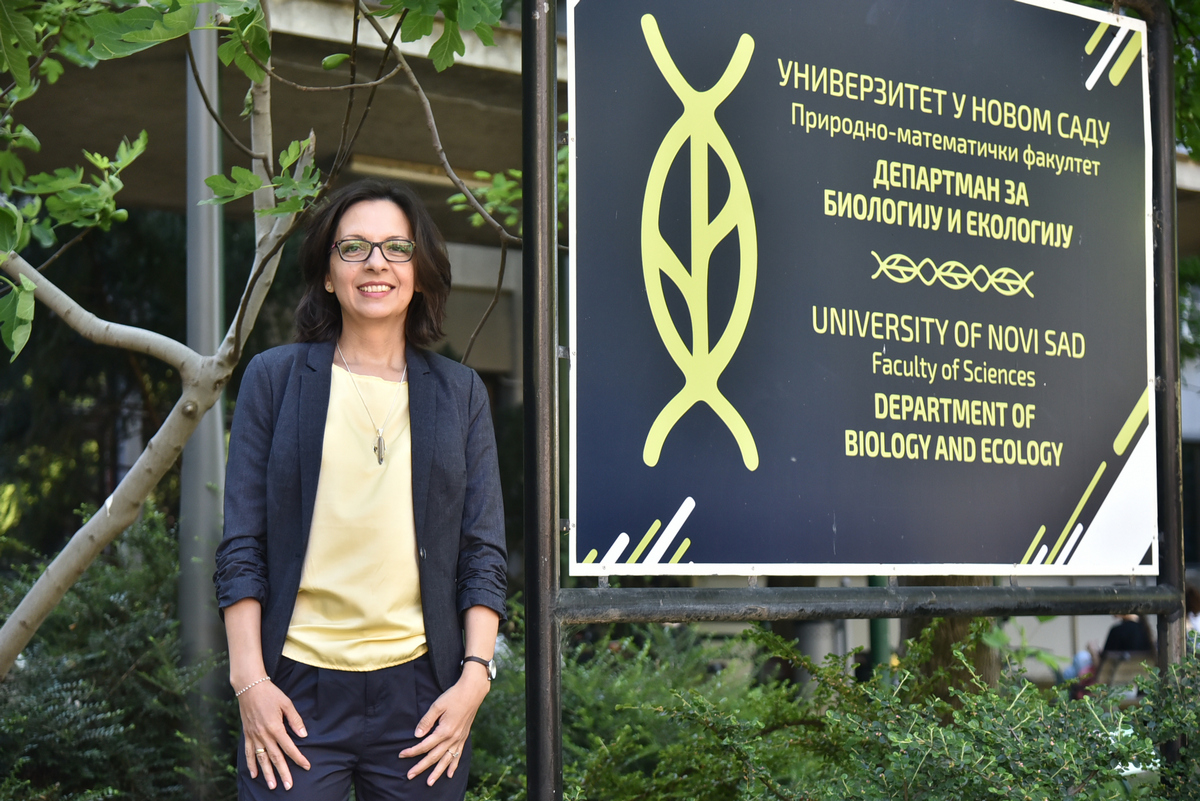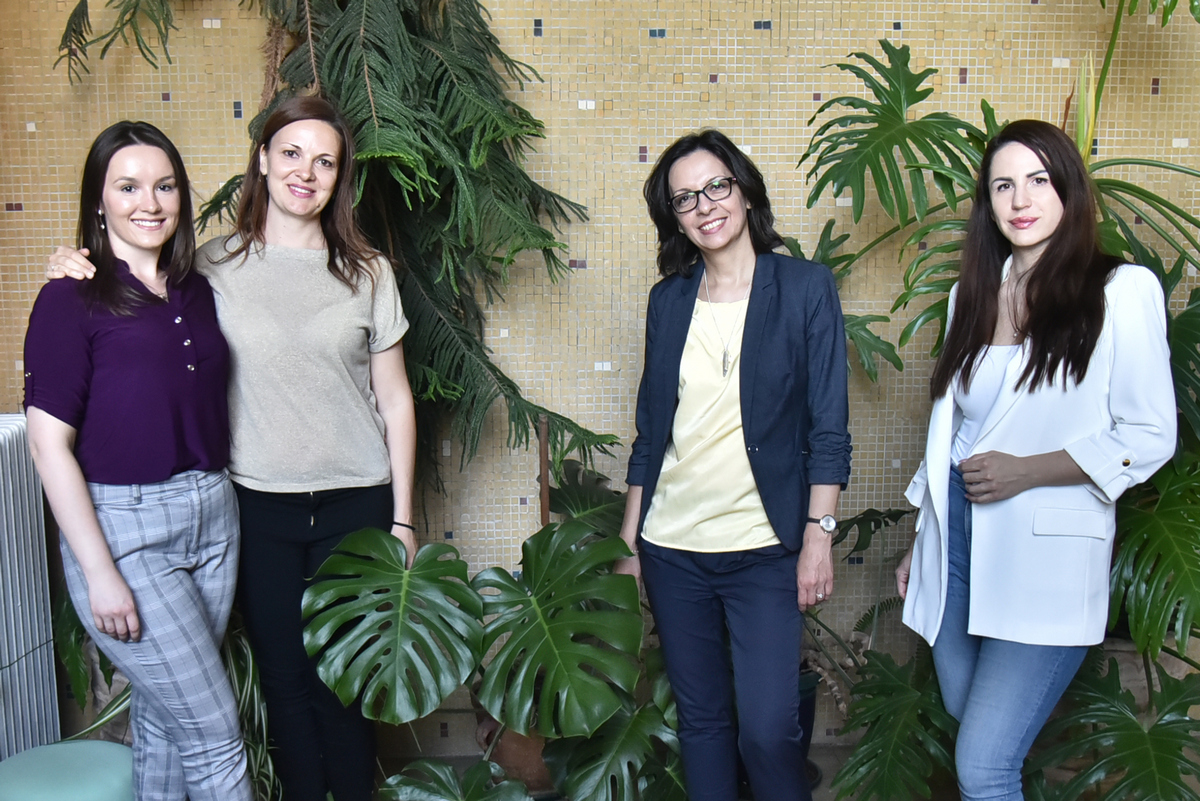Project Title:
Biomarkers of neuroactive campounds in the aquatic environment – Integration into adverse outcome pathway framework
Article Author and Principal Investigator
Dr. Sonja Kaišarević
Full Professor, Faculty of Sciences University of Novi Sad

We live in an era characterized by global environmental pollution, with escalating concerns regarding its impacts on ecosystems and human health. In recent years, a growing silent threat has emerged in the environment in the form of a group of substances known as neuroactive compounds.
Neuroactive compounds represent a diverse group of substances produced and used to modify the activity of the nervous system in humans and other target organisms. The most important representatives of these compounds are pharmaceuticals with neuroactive properties (such as antidepressants, anxiolytics and anticonvulsants), stimulants such as caffeine, psychoactive substances and certain pesticides. The global usage of neuroactive compounds is constantly increasing, and evidence from the pertinent scientific literature suggest that these substances and their metabolites are now among the most abundant chemicals found in European rivers, especially in regions near big cities and urban settlements. They primarily enter rivers through municipal wastewater effluents, and in the case of pesticides through agricultural surfaces runoff. Wastewater treatment plants, even when they are present, often lack the capacity to completely remove neuroactive compounds from the effluent. In many cities in Serbia where such treatment plants do not exist, the problem becomes even more serious. The trend of growing urbanization and modern lifestyle, as well as intensive use of pesticides in agriculture suggest that this problem is unlikely to be solved, but we can expect even higher concentrations of neuroactive substances in rivers in the future.
Once they enter the aquatic environment, neuroactive substances and their metabolites affect fish and water invertebrates. The effects observed in these organisms include disturbances in reproduction, developmental retardation and morphological abnormalities, changes in mobility, behavior, ability to find food, avoid danger and defend against predators. These alterations not only jeopardize the survival of affected individuals, but also of entire populations.
The Project entitled „Biomarkers of neuroactive compounds in the aquatic environment: integration into adverse outcome pathway framework – BIANCO “ financed by the Science Fund of the Republic of Serbia within the program PROMIS, has provided insights into the mechanisms of toxic actions of neuroactive compounds and their potential in defining specific biomarkers of effect, or universal changes at the molecular level that confirm that the organism was affected by these substances, even when they exhibit different primary modes of action. Additionally, the project has focused on integration of sensitive biomarkers into existing frameworks that describe chains of events at the molecular, cellular, tissue, organ, individual and population levels, linked by causality and leading to final adverse outcome. These frameworks, known as adverse outcome pathways (AOPs), through the approach applied within this Project enable definition of adverse effects of single toxic compounds.
The work on Project BIANCO has so far resulted in the publication of two scientific papers in eminent international scientific journals. In one paper, we adDr..essed the occurrence of neuroactive compounds in the environment, and presented research approaches, limitations, and challenges in development of biomarker-based strategy for their impact assessment. In another paper, we presented the results of investigation of the effects of caffeine on specific molecular processes in nerve cells. Although not of particular concern, due to the ubiquitous presence of caffeine in the aquatic environment and the intense global use of this substance, these effects should rather be taken seriously than neglected. Through numerous presentations at scientific conferences in Serbia and abroad we pointed out to the potential molecular targets for toxic action of neuroactive substances, primarily enzymes and transporters involved in the removal of neurotransmitters from the synapses, as well as certain elements involved in the release of neurotransmitters from the nerve cell and propagation of nerve impulses.
The current approaches in chemical risk assessment do not cover adequately the potential risk posed by neuroactive compounds in the environment, as well as other potentially neurotoxic substances. Therefore, investigations focusing on definition of biomarkers of effect of neuroactive compounds are of great scientific and professional relevance. Moreover, as a candidate country for EU membership, the Republic of Serbia is in the process of harmonisation of its regulations on chemicals with EU legislation. Therefore, a step forward in establishment of a legal frame for actions aimed to reduction of human and environmental health risk will reflect positively on Serbian legislation as well. In a broader context, the Project aims to define new adverse outcome pathways for neuroactive compounds in the aquatic environment and develop new strategies in their development relying on the utilization of so far insufficiently exploited scientific knowledge from the existing databases. Consequently, the project results are universal, recognizable and applicative in an international context, particularly in regulatory toxicology and environmental risk assessment, among other fields.
Support of the Science Fund of the Republic of Serbia to scientific research in Serbia, including realization of investigations within the Project BIANCO, is of exceptional importance for the development of science in our country. The project BIANCO has been entirely realized in the Laboratory for Ecophysiology and Ecotoxicology (LECOTOX) at the Department of Biology and Ecology, Faculty of Sciences, University of Novi Sad. The obtained funds enabled realization of planned research activities, presentation of project results to scientific community and general public, as well as purchase of new laboratory equipment. The project implementation has launched the research of the group into a new area, and boosted innovativeness, professional capacities and competences of project participants. The project results will also create new research possibilities and professional opportunities and further enhance networking with colleagues from Serbia and abroad. Our daily activities also involve teaching, through which knowledge related to modern research in the field of ecophysiology and ecotoxicology is continuously transferred to students.
The professional plans of our research group are focused on further strengthening of the laboratory LECOTOX, through national and international research projects. In addition to improving our scientific potential, these new projects will, among other benefits, provide opportunities to attract and engage the best students with strong motivation. In stimulating working conditions and a creative atmosphere, they will realize their own and our shared scientific ideas and goals through which we will progress on individual level, as an academic community, and as a society as a whole.
Project Budget
EUR 110,571
Scientific and Research Organizations:
Faculty of Sciences University of Novi Sad
Project Team Members:
- Dr. Ivana Teodorović, Full Professor, Faculty of Sciences, University of Novi Sad
- Dr. Tanja Tomić, Assistant Professor, Faculty of Sciences, University of Novi Sad
- Dr. Dina Tenji, Research Associate, Faculty of Sciences, University of Novi Sad
- MA Irina Vulin, Research Assistant and PhD student, Faculty of Sciences, University of Novi Sad
